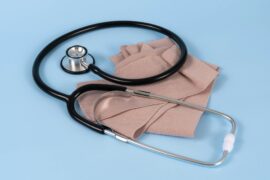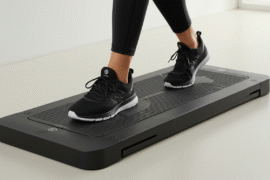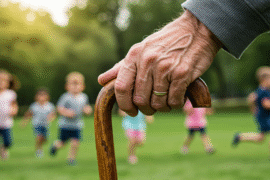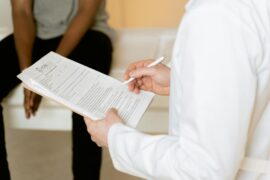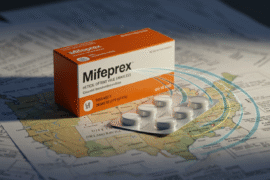This article may contain references to products or services from one or more of our advertisers or partners. We may receive compensation when you click on links to those products or services. Nonetheless, our opinions are our own.
The information presented in this article is accurate to the best of our knowledge at the time of publication. However, information is subject to change, and no guarantees are made about the continued accuracy or completeness of this content after its publication date.
After a pedestrian accident, your injuries are the starting point of your legal case, and your medical bills and records are how those injuries are proven. They are the official documents that track what happened to you, how badly you were hurt, and what kind of care you needed to recover. This includes everything from your initial diagnosis to every follow-up visit, test, treatment, or surgery.
Medical bills do more than show you were injured. They help create a clear timeline of events. This timeline is key for showing how the accident caused your injuries, how serious they were, and how they've affected your life physically, emotionally, and financially.
If your bills are missing or incomplete, it becomes much harder to convince anyone – insurance companies, judges, or juries, that your injuries are as serious as you say they are. And if you're looking for a legal team that knows exactly how to use this documentation to fight for your compensation, choose Wapner Newman. These lawyers understand how important every detail is, and they don't let anything slip through the cracks.
Proving the Accident Caused Your Injuries
In pedestrian accident cases, proving fault (also known as liability) is one thing. But proving that your injuries were caused by the accident is just as important and sometimes even more difficult. The other side (usually the insurance company or the defendant) might try to say that your injuries were already there before the accident or that they aren't as bad as you claim.
This is where solid medical bills and records come in. When you go to the doctor immediately after the accident and continue to get treatment, there's a clear and reliable record that your injuries came from that exact event.
If, for example, you suffered a concussion or internal injury, the medical documentation will show exactly when those issues were discovered and how they developed over time. It leaves no room for doubt.
Calculating Damages Based on Your Medical Bills
In simple terms, damages mean the money you're asking for to cover your injuries and losses. And medical bills are one of the biggest parts of that. Every appointment, treatment, surgery, medication, or therapy session comes with a cost. These expenses are proof of how serious your injury is and how much it's impacted your life.
Medical bills can also help estimate future costs. If your injuries require long-term treatment or affect your ability to work, those future medical expenses and lost income must be calculated. Detailed medical records help lawyers and courts see the full picture. Without them, it's nearly impossible to ask for the right amount of compensation, let alone win it.
Supporting Claims for Future Medical Needs
Medical bills don't just show what you've already paid; they also help prove what you'll likely need to pay in the future. Let's say your doctor recommends six months of physical therapy, or maybe you need another surgery down the line to help with a long-term injury.
That future care costs money, and you shouldn't have to pay for it if someone else caused your injuries. But to ask for that future compensation in your claim, you need something to back it up. This is where your existing medical bills come in.
The pattern in your treatment and the recommendations listed by your doctors (which are often included in the bills and associated medical reports) help predict what your recovery will cost going forward.
Your lawyer can then use those numbers to ask for future medical expenses to be included in your compensation package. Without these records, it becomes a lot harder to argue for money you haven't spent yet, even if you're clearly going to need that care. Basically, these medical bills don't just explain the past, but they help prepare for the future when it comes to medical costs.
Holding the At-Fault Driver Accountable
Pedestrian accidents often happen because a driver made a mistake—speeding, not stopping, texting while driving, or being under the influence. When a driver fails to see or yield to a pedestrian, the results can be devastating. If you've been hurt due to someone else's negligence, you have the right to be compensated.
Medical bills and records are your strongest tools in holding the driver accountable. They prove what you went through, how badly you were hurt, and how the accident changed your life.
And when you work with experienced attorneys who know how to use that documentation the right way, your chances of getting the compensation you deserve increase dramatically.

Reviewed and edited by Albert Fang.
See a typo or want to suggest an edit/revision to the content? Use the contact us form to provide feedback.
At FangWallet, we value editorial integrity and open collaboration in curating quality content for readers to enjoy. Much appreciated for the assist.
Did you like our article and find it insightful? We encourage sharing the article link with family and friends to benefit as well - better yet, sharing on social media. Thank you for the support! 🍉
Article Title: The Importance of Medical Bills in Pedestrian Accident Cases
https://fangwallet.com/2025/06/05/the-importance-of-medical-bills-in-pedestrian-accident-cases/The FangWallet Promise
FangWallet is an editorially independent resource - founded on breaking down challenging financial concepts for anyone to understand since 2014. While we adhere to editorial integrity, note that this post may contain references to products from our partners.
The FangWallet promise is always to have your best interest in mind and be transparent and honest about the financial picture.
Become an Insider

Subscribe to get a free daily budget planner printable to help get your money on track!
Make passive money the right way. No spam.
Editorial Disclaimer: The editorial content on this page is not provided by any of the companies mentioned. The opinions expressed here are the author's alone.
The content of this website is for informational purposes only and does not represent investment advice, or an offer or solicitation to buy or sell any security, investment, or product. Investors are encouraged to do their own due diligence, and, if necessary, consult professional advising before making any investment decisions. Investing involves a high degree of risk, and financial losses may occur including the potential loss of principal.
Source Citation References:
+ Inspo
There are no additional citations or references to note for this article at this time.





